
Published:
Readtime: 11 min
Every product is carefully selected by our editors and experts. If you buy from a link, we may earn a commission. Learn more. For more information on how we test products, click here.
Originally a stripped-down, lightweight track weapon filled with (albeit fun) compromise, the Porsche 911 GT3 has grown to become a more comfortable, pragmatic vehicle with every new generation. That’s not to say it’s a cushy daily driver, especially with the hardcore Weissach Package as seen here, but with a modest size and weight increase to cater to safety regulations and customers’ expectations, it’s become an infinitely more capable, quicker, and safer vehicle.
Simply put, Porsche found and refined the perfect sports car formula. They have something that no other luxury car brand on earth has, so the only thing they had to do with the new-generation 911 GT3 was not mess with that perfect recipe. It’s certainly not in their nature to do so, but there’s always a risk that pesky emissions and government regulations can take great things away from us.
Having driven the previous-generation Porsche 911 GT3 more than 1,000 km in a weekend when it launched, I was itching to get behind the wheel of the new-generation vehicle to ensure it still shared that same DNA. The track is the best place to test that theory, so I headed to Sydney Motorsport Park on an overcast Wednesday afternoon to cut some laps in PDK and Manual 911 GT3 variants. Here’s what I found out behind the wheel.
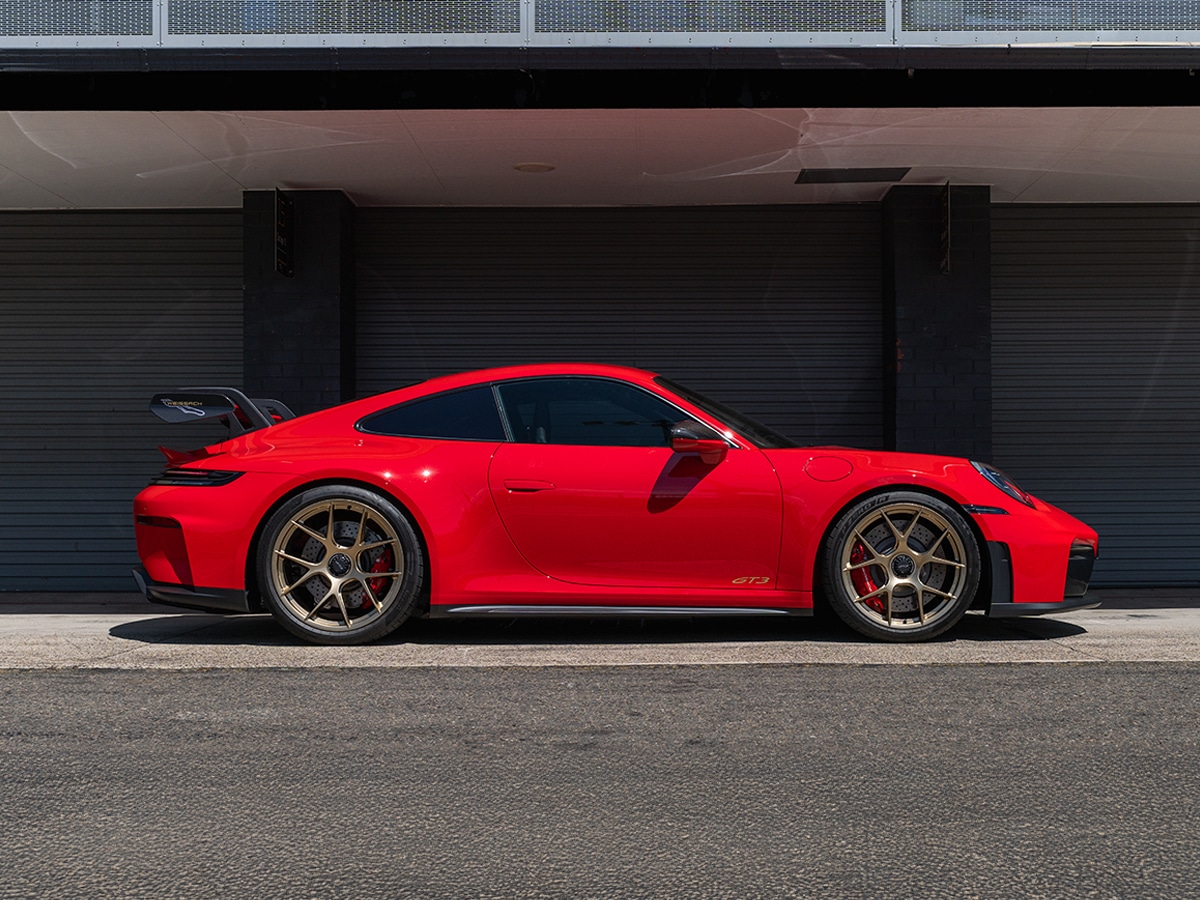
Price
The new Porsche 911 GT3 and Porsche 911 GT3 with Touring Package start at AUD$446,700 plus on-road costs, while the “as tested” price for the car I’m driving is AUD$575,460 before on-road costs after personalisation.
You’ll need to remember that, like the previous-generation vehicle, these cars are allocation-only, and you simply can’t walk into a Porsche dealership and purchase one.
Like the new 911 GTS T-Hybrid (from AUD$381,200 plus on-road costs), Porsche has an extensive options list that can turn your new car into a track-focused toy, or a comfortable daily driver, especially if you opt for the Touring Package. The focus for this review, being a track-only event, is the 2026 Porsche 911 GT3 with Weissach Package (as pictured throughout). Both Guards Red-coloured cars are identical, with the only differences being the 6-speed manual and PDK transmissions.
Here are the options equipped to the test car, which had a track focus:
- $0 – Guards Red
- $0 – Seat heating (front)
- $0 – Club Sport Package
- $0 – 6-speed GT sports transmission
- $250 – Preparation for Porsche Dashcam
- $550 – Model designation on doors in California Gold
- $600 – ‘BORN IN FLACHT’ logo LED door courtesy lights
- $720 – Pedals in Aluminium
- $750 – Steering column casing in leather
- $780 – Personalised vehicle keys painted with case
- $860 – Sun visors in Race-Tex
- $930 – Seat belts in Guards Red
- $1,120 – Exclusive Design taillights
- $1,150 – Privacy glass
- $1,500 – Door sill guards in Carbon matt, illuminated
- $4,150 – Chrono Package with Porsche Design GT clock
- $6,240 – Tinted HD-Matrix LED main headlights
- $11,210 – Standard interior, with extensive leather / Race-Tex items, Black (contrasting Guards Red)
- $13,120 – Lightweight sport bucket seats (foldable)
- $33,480 – 20-/21-inch 911 GT3 forged Magnesium lightweight wheels
- $47,530 – Weissach package with roll cage in Carbon Fibre
Every Australian-delivered Porsche GT3 gets a Tyre fit set, up to the Dreams exterior colour range, a lifting system on the front axle, ParkAssist (rear) with reversing camera, Light Design Package, and Digital radio as standard, which is above and beyond overseas specifications.
Compared to the next most expensive rear-wheel drive 911 Coupé, the 911 Carrera GTS (from AUD$381,200 before on-roads), the 911 GT3 commands a near AUD$60,000 price premium. That can balloon quickly when options are fitted to the car, particularly the magnesium lightweight wheels ($33,480) and Weissach package with roll cage in carbon fibre ($47,530) alongside the anti-roll bar, coupling rods, shear panel on the rear axle, roof, side plates of the rear wing, exterior mirror top shell, mirror triangle and the air blades in the front area. Whether or not you need these options is entirely up to you and the direction in which you want to take your build.
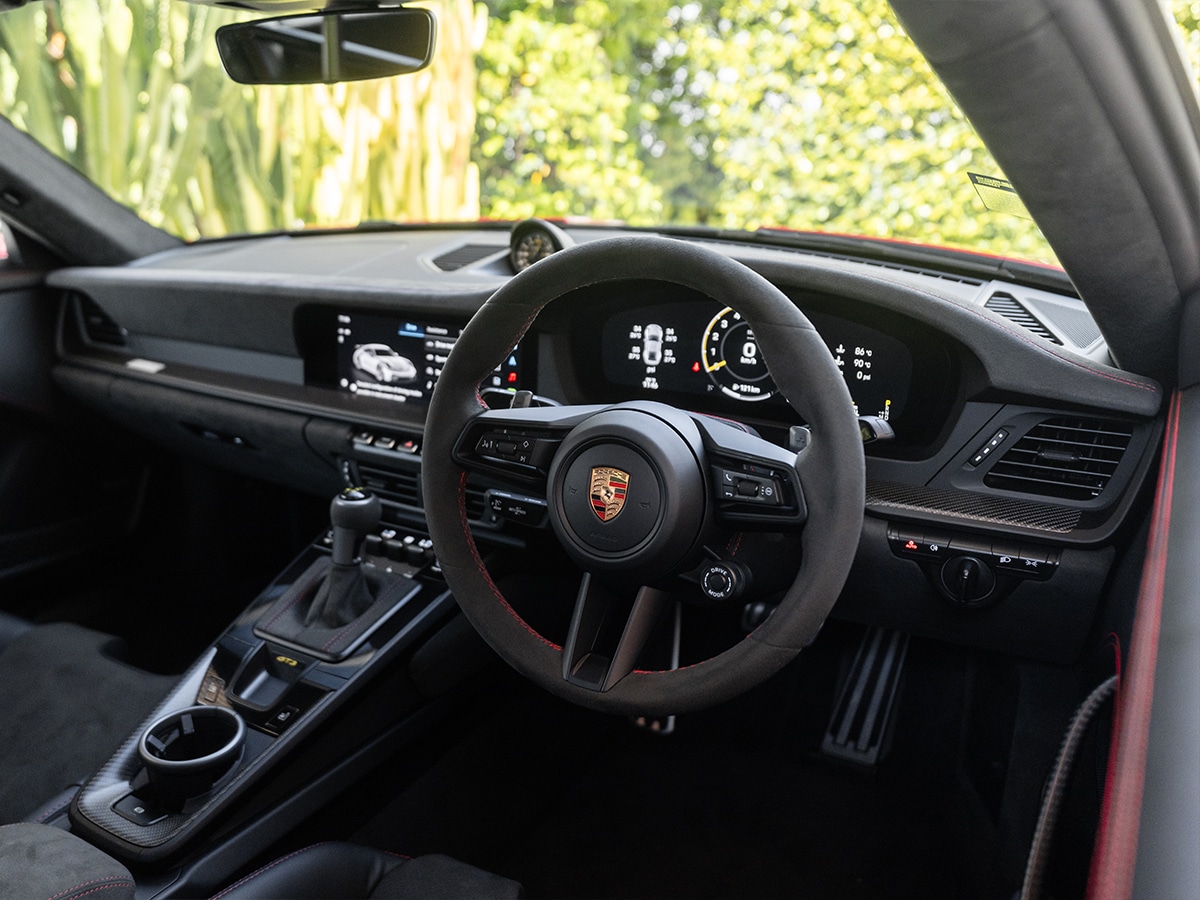
Interior
Quickly on the interior, because we’re here to talk about the driving experience.
Purists will be happy to know that the rotary ignition switch, unlike the button in the standard 911 Carrera, has been retained from the previous generation. The standard configuration is a two-seater, the same design as the current 911 models, but a rear seat can be added as an option in the 911 GT3 with Touring Package, should you want to carry friends for short distances.
Maybe the most impressive addition to the cabin is the new lightweight sports bucket seats, which have a folding backrest and a seat shell made of carbon fibre reinforced plastic (CFRP), which are available as an option. They feature an integrated thorax airbag, electric height adjustment, and manual longitudinal adjustment, while a three-stage seat heater is also an option. Where the Weissach logo is featured below, part of the headrest padding can be removed to improve ergonomics when wearing a helmet during track use.
If you choose the seats, you can have a bolted steel rear roll cage, a 6-point driver harness, and a handheld fire extinguisher at no extra cost.
I could go on about Porsche’s use of materials, but that would be exhaustive, as each vehicle configuration is vastly different. The Touring Package cars I drove were filled with leather and felt like Bentleys, while the Guards Red Weissach Package cars chose carbon fibre and Race-Tex, which was available on the upper side of the dashboard for the first time.
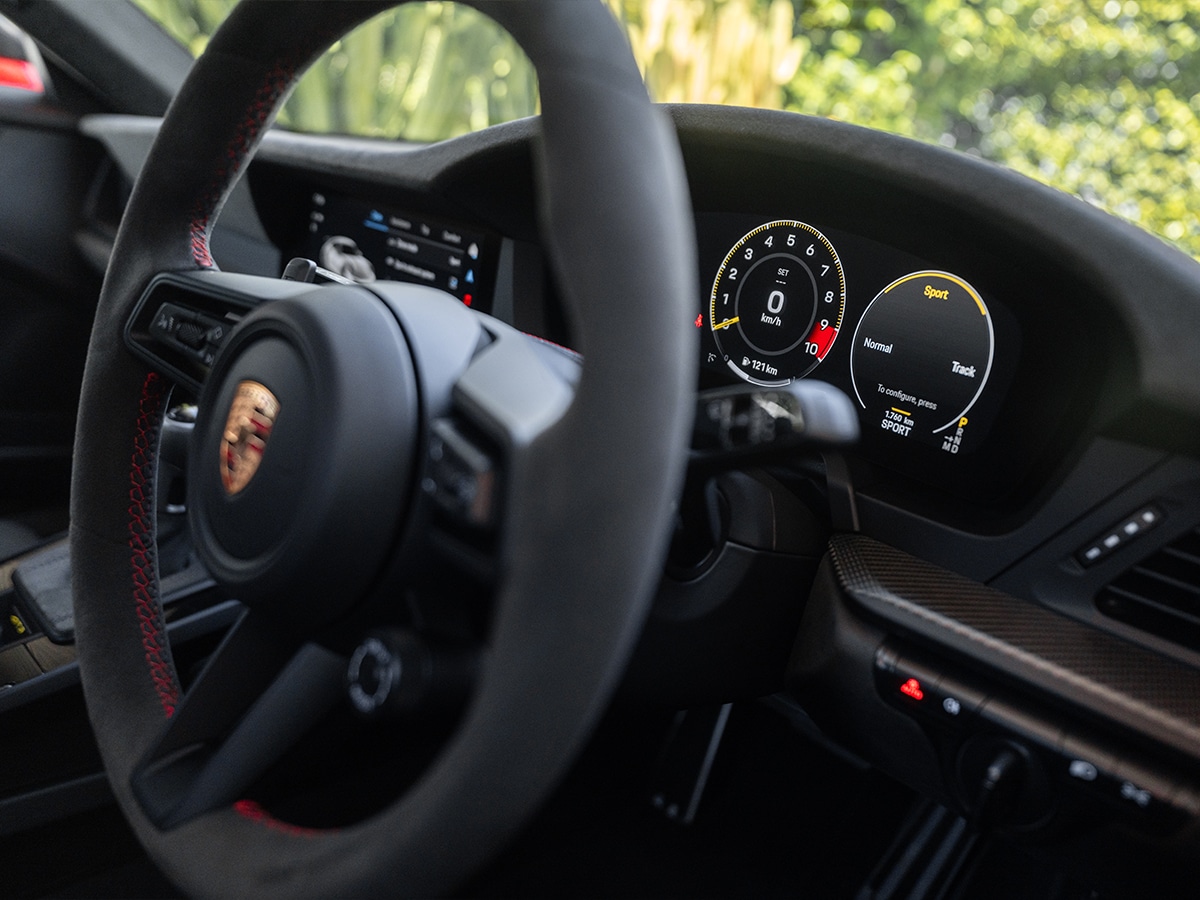
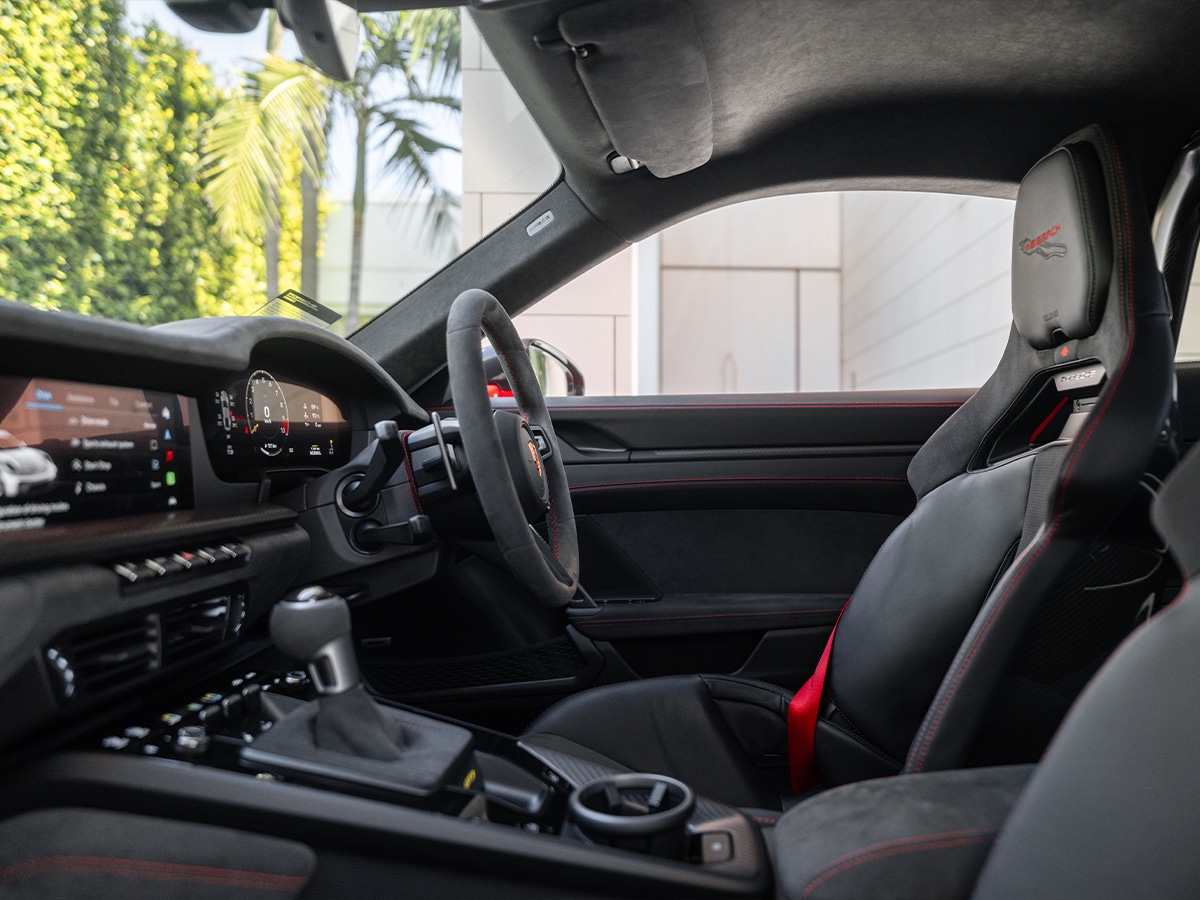
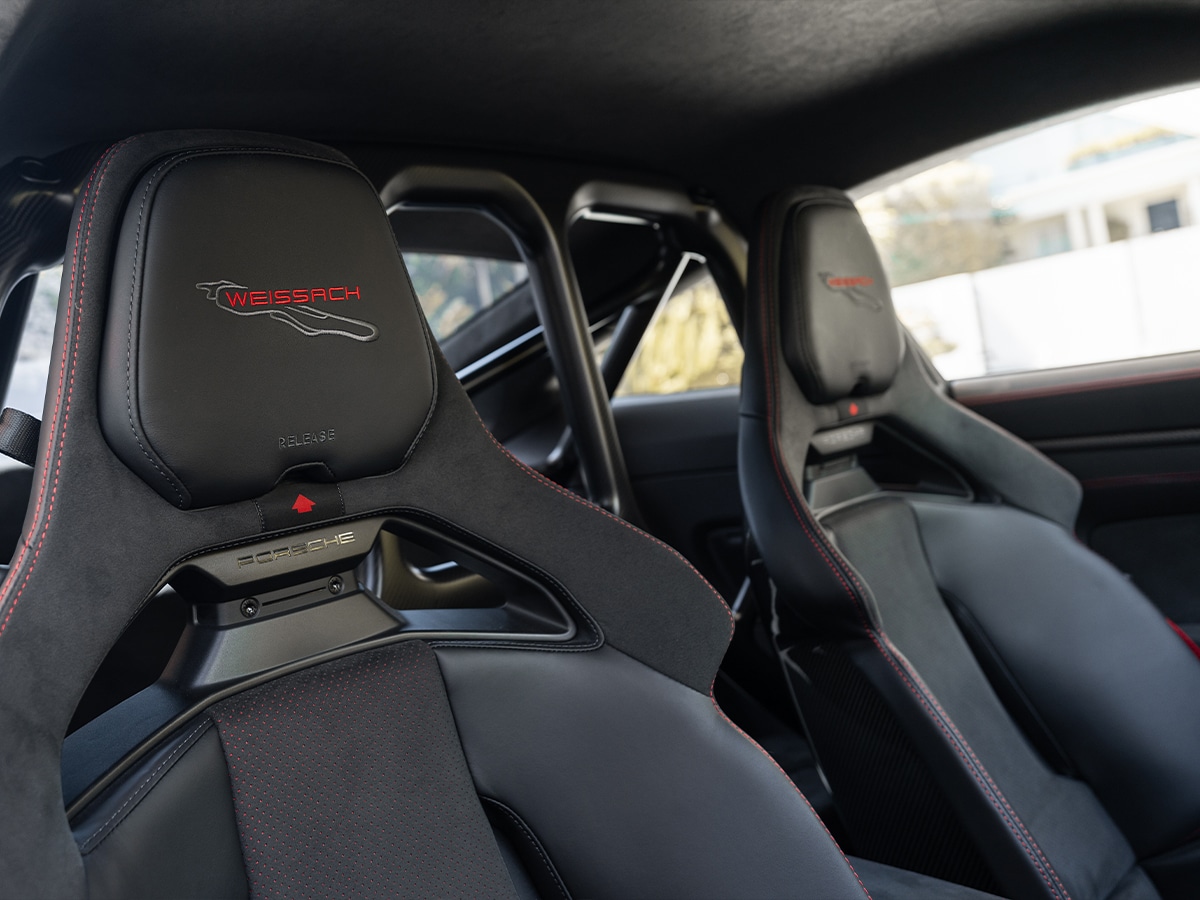
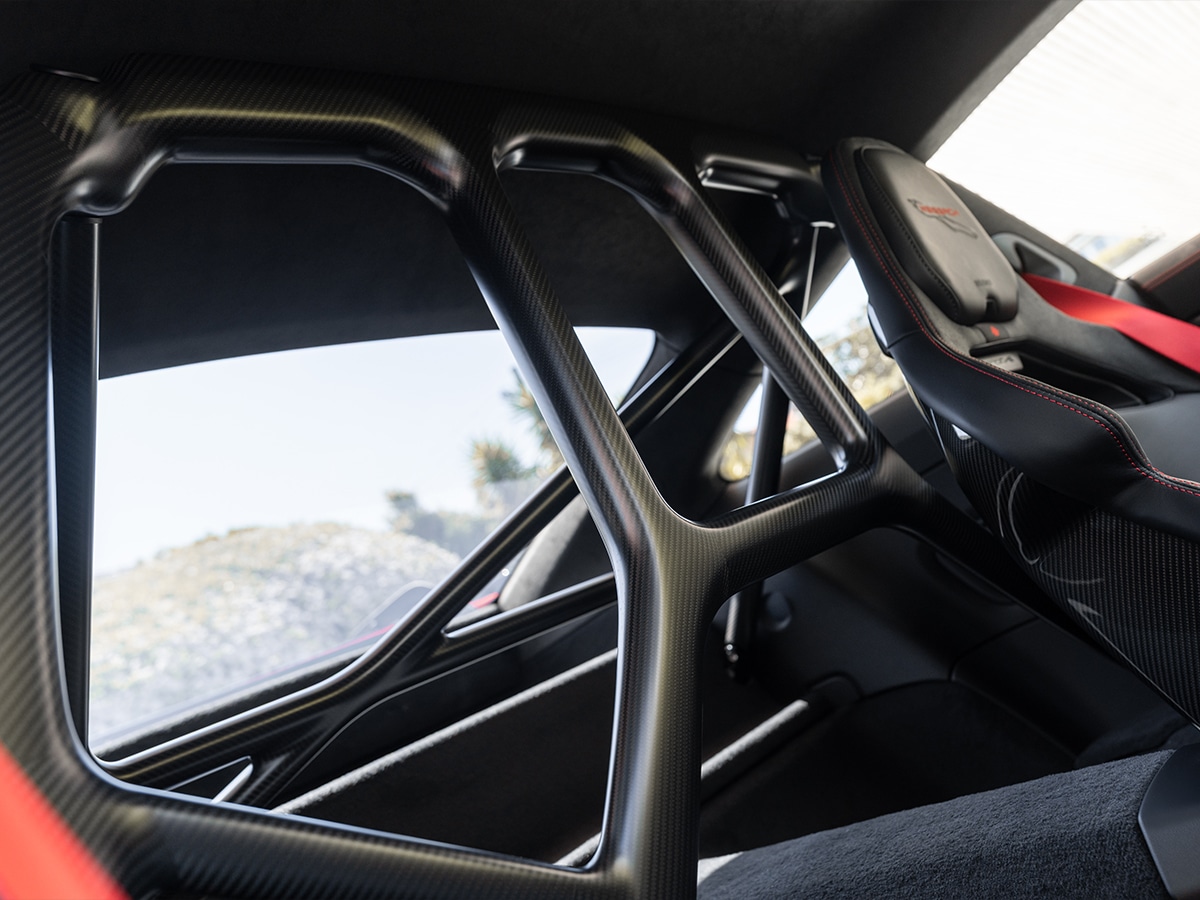
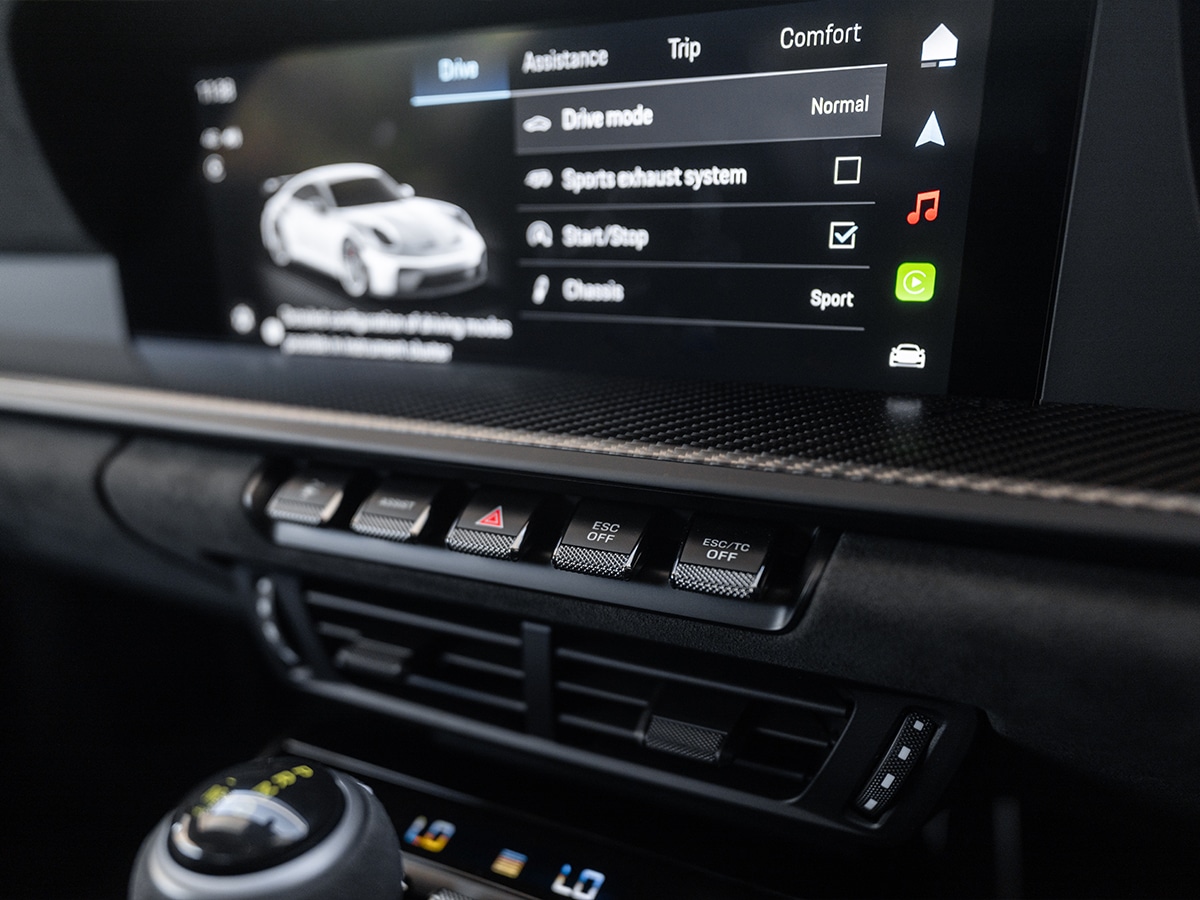
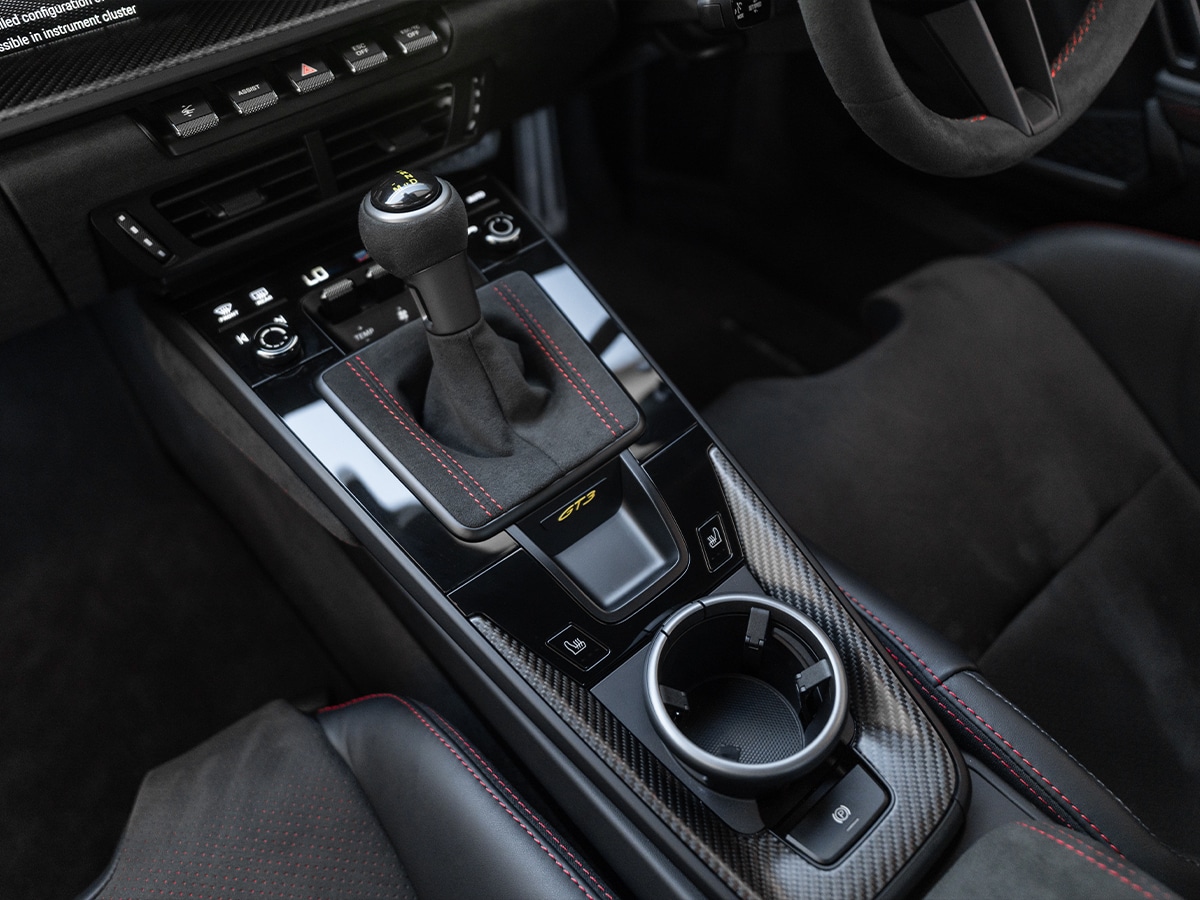
Technology-wise, it carries over from the standard 911 Carrera, with a 12.6-inch curved digital driver’s display with customisable layout options and a centrally mounted Porsche Communication Management (PCM) system that runs on a 10.9-inch infotainment display with wireless Apple CarPlay and Android Auto. Your phone is charged on the wireless charger (15 watts), the Sound Package Plus (8 speakers, 150 watts of power) is standard, and you can opt for a BOSE Surround Sound system.
While I wasn’t the biggest fan of losing the gorgeous analogue rev-counter from the previous generation, the tachometer display can be rotated so that the cut-off speed of 9,000 rpm is at the 12 o’clock marking, and that’s a fair trade-off.
On the track day, we were cycling through cars, so there wasn’t much opportunity to play around with the displays and technology in the vehicle. However, I did get a chance to check out the specialised “Track Screen” display mode, which reduces the digital displays to the left and right of the tachometer to key data on tyres, oil, water, and fuel and indicates the optimal shifting time with a shift flash.
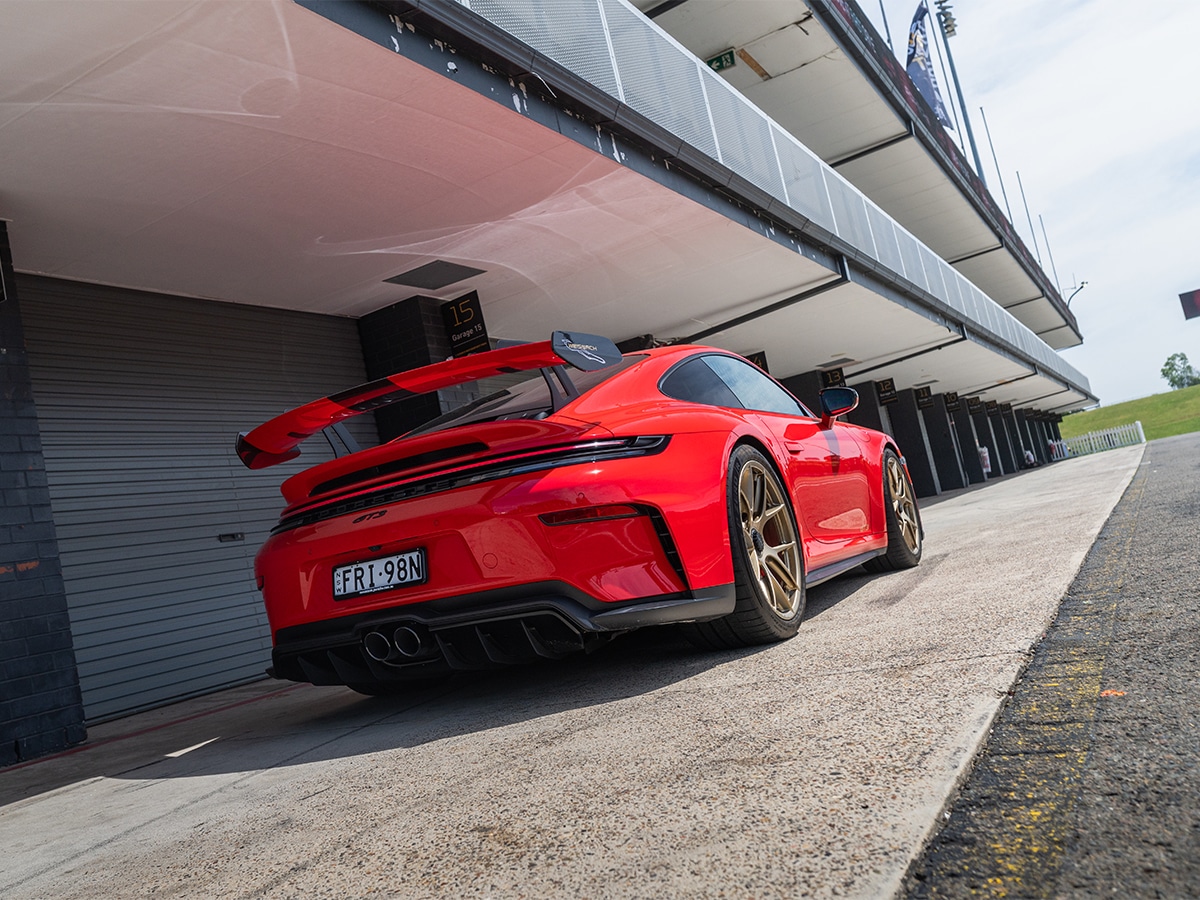
Powertrain
Porsche had to jump through many, many hoops to keep the new car’s heart and soul alive. Of course, I’m talking about the 4.0-litre flat 6-cylinder naturally aspirated engine.
Even with “significantly stricter exhaust standards” fighting against them, which include two particulate filters and four catalytic converters, the 992.2 GT3 has retained 375 kW (510 PS) of power and torque has only dipped to 450 Nm. They’ve done so with revised cylinder heads and sharper camshafts from the 911 GT3 RS, which provide even more dynamic performance in the upper engine-speed range—finally, flow-optimised individual throttle valves and optimised oil coolers.
The acceleration time remains the same, with 0-100 km/h achieved in 3.4 seconds with PDK (3.9 seconds with 6-speed manual) and a top speed of 311 km/h for the PDK and 313 km/h for the manual.
Both gearbox options are available for the 911 GT3 and the 911 GT3 with Touring Package. That makes it probably the toughest choice once you get your allocation. The 7-speed dual clutch transmission (PDK) and the 6-speed GT manual transmission have a new final drive ratio, eight per cent shorter than the predecessor. Selection should come down to use case, and if you plan on driving your 911 GT3 daily, I recommend the PDK. That being said, the manual is special, and who knows how long it will last.
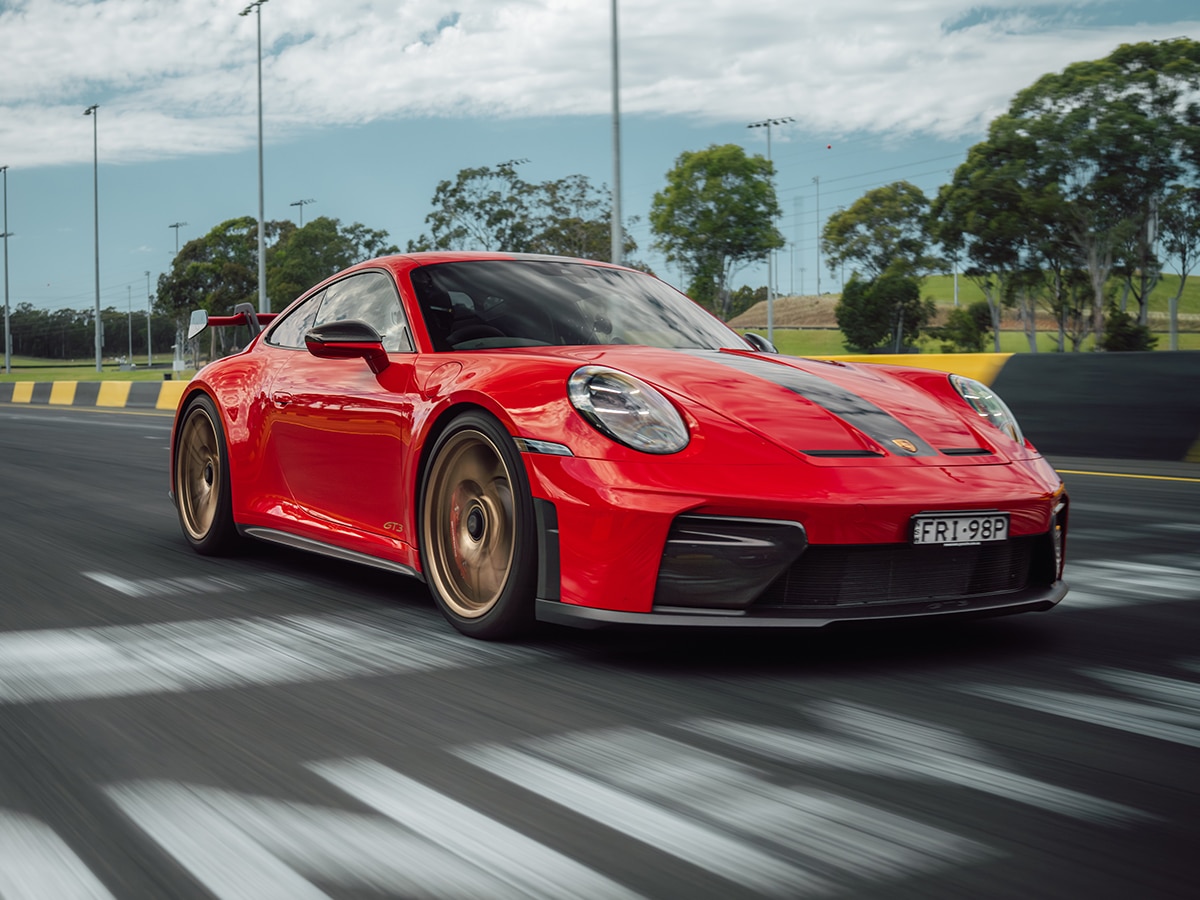
Driving
Within two corners, I was reminded how great the Porsche 911 GT3 is.
I sound like a broken record, but the steering feel, feedback, and control stood out first. I’m not sure if it’s because every other new car has gone two steps backwards in this regard since the introduction of electronic power steering (EPAS), but the Porsche is communicative beyond belief. The vehicles we were driving were set up for track work, so the front wheels were cambered for grip, but even then, the feeling you get through your hands, arms, back, and buttocks is unlike anything else. It’s as if you’re sitting outside the car, turning the front wheels with your hands.
“Particularly on winding country roads, you can clearly feel that the steering is even better tuned than its predecessor,” said Porsche brand ambassador Walter Röhrl. “It instils even greater confidence in the car because it responds more calmly from the centre position without losing any of its directness. The shorter gear ratio also significantly enhances driving pleasure on country roads.”
Of course, it’s supremely capable. We ran lead-follow laps around the track, and we weren’t going slow, with Bathurst Champion Luke Youlden setting the pace in front.
The last time I was on track at SMSP, I was behind the wheel of a 1,000 HP Lamborghini Revuelto. That car was mind-bendingly fast, knocking on the door of 300 km/h down the front straight. However, the Porsche reminded me of what it’s like to enjoy a car on track—not chase speed but precision and enjoyment instead.
I was incredibly focused on extracting the most from the car, but it’s amazing how it works with you as the driver to hit apexes, brake late, wind the steering out on corner exit, and get the line just right. You become a better driver in the process. Unlike so many cars, which are overpowered and heavily controlled by software to stop you crashing, the 500HP 911 GT3 doesn’t do all the work for you. It’s damned satisfying when you get it right, and it encourages you to do so.
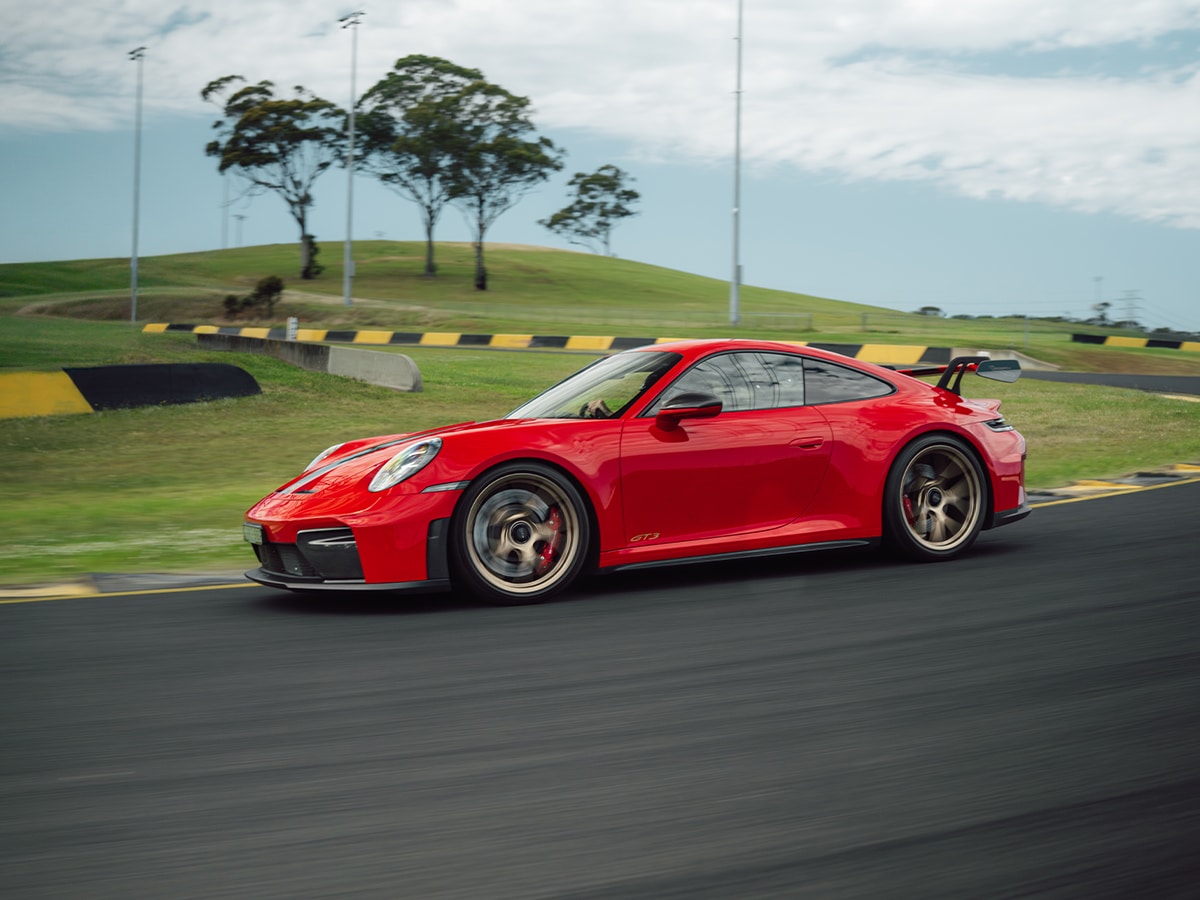
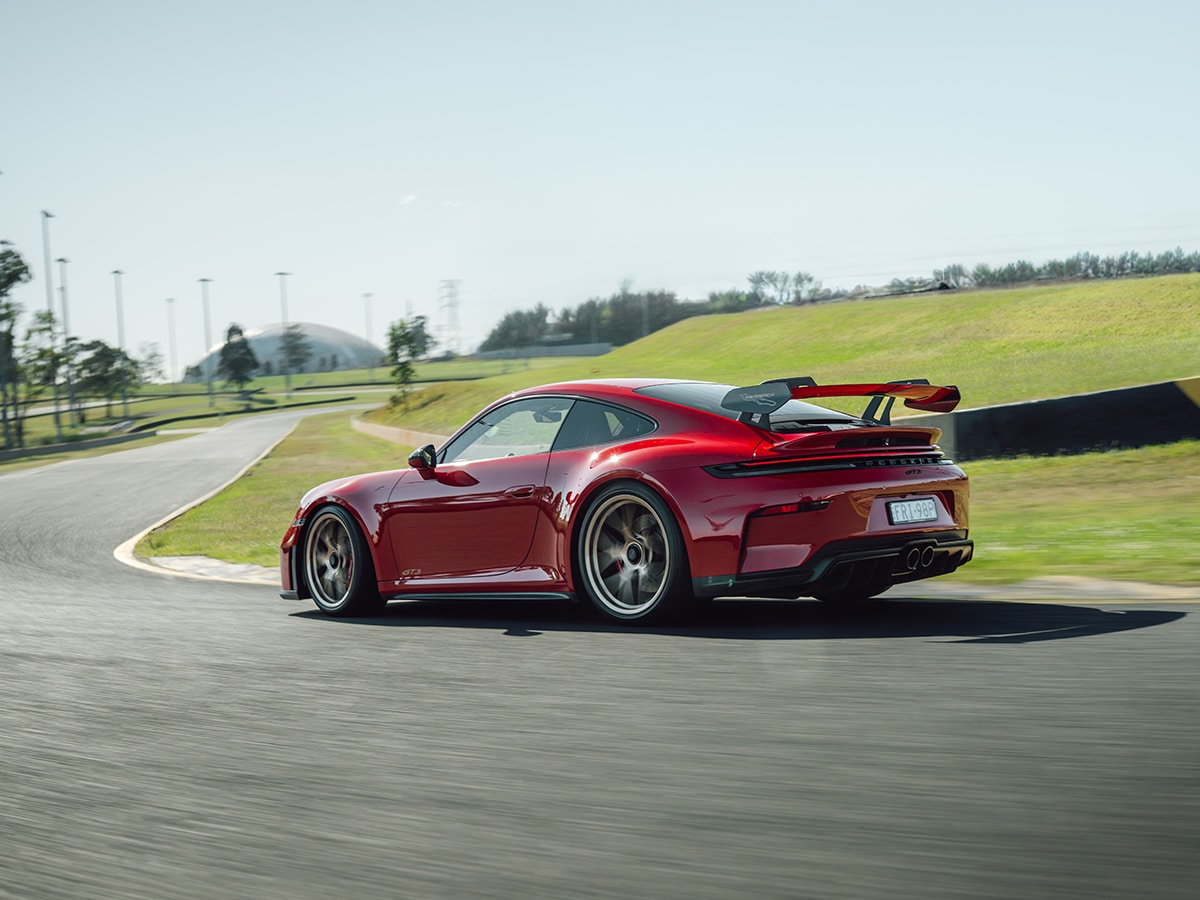
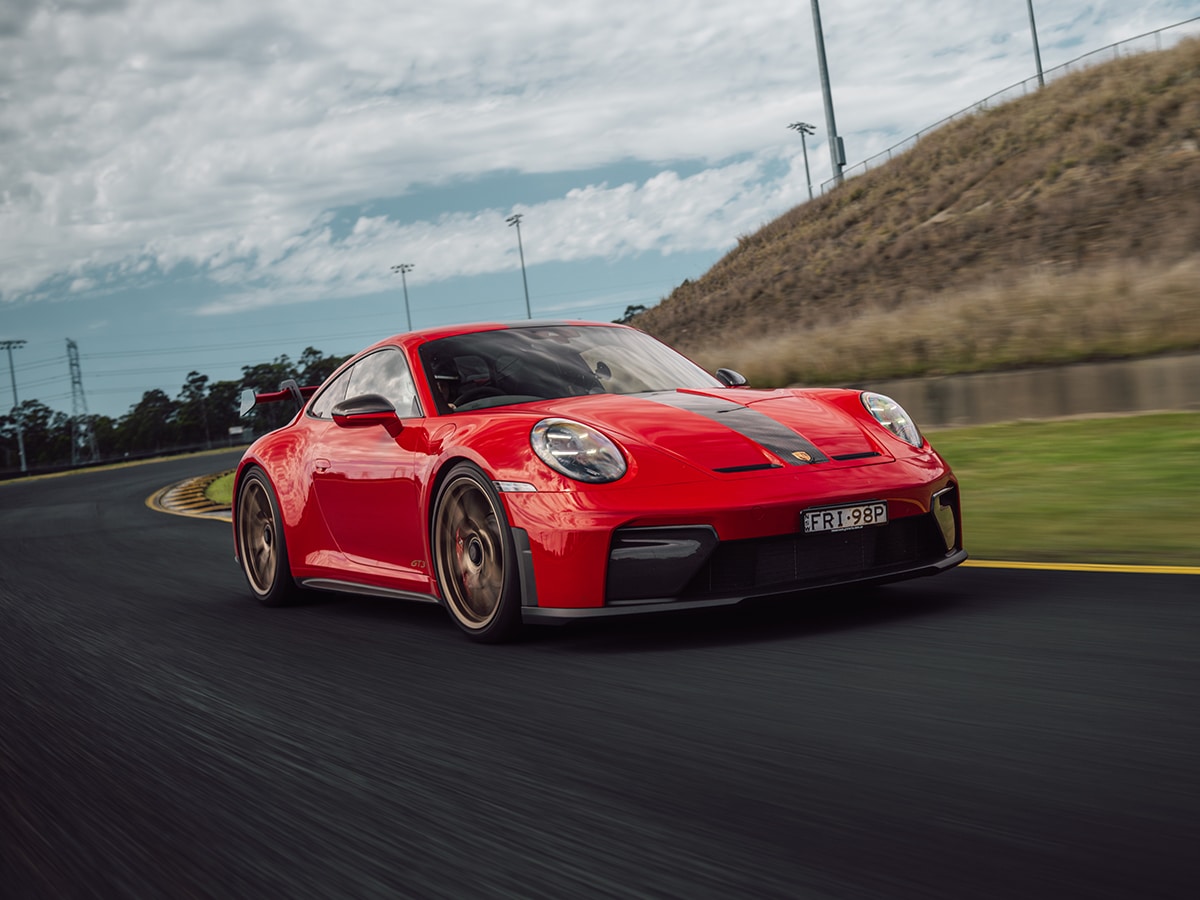
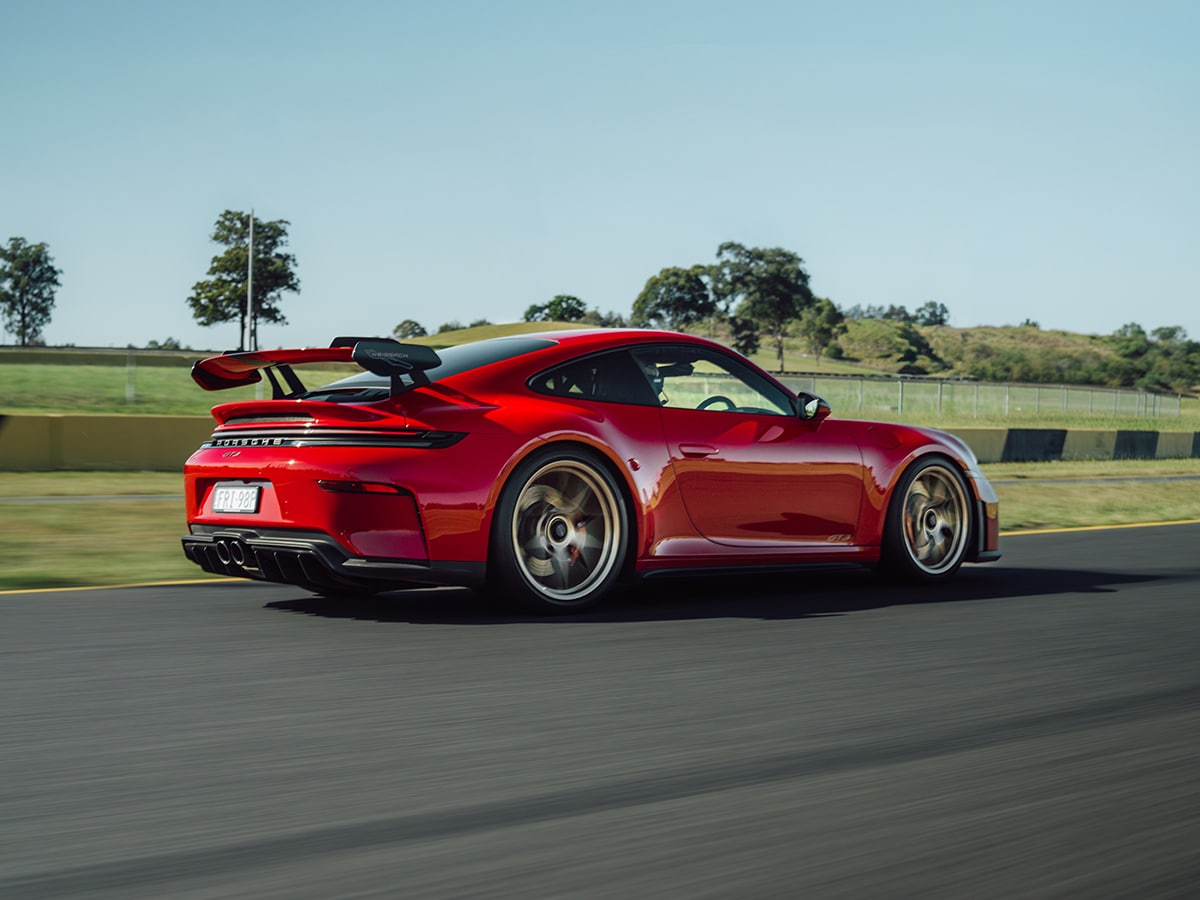
You won’t be asking for more power, and I have no idea how Porsche has managed to keep the sound of the 4.0-litre flat 6-cylinder naturally aspirated engine so visceral and rewarding to the driver (and people watching). Despite the two particulate filters and four catalytic converters, it doesn’t sound like the volume has dropped. It might be even louder inside than before, but I’m unsure if this is real or pumped through the speakers. It sounds excellent regardless.
Our car was fitted with the optional Magnesium wheels, available with the Weissach or Lightweight packages. They save nine kilograms, but honestly, I’m unsure if I could tell. There’s also a new 40 Ah lithium-ion lightweight battery, contributing to the 1,420 kilograms (lightest configuration) by shaving off another roughly four kilograms.
It’s also perfectly balanced, and the front ball joint of the lower trailing arm has been set lower on the front axle to facilitate this by taking advice from the RS. The result is reduced pitching (anti-dive) when you jump on the anchors, big six-piston aluminium monobloc fixed brake calipers at the front, four-piston aluminium monobloc fixed brake calipers at the rear. Porsche Ceramic Composite Brakes (PCCB) are available as an option ($22,120), but they weren’t fitted to our car.
“On the track, the new 911 GT3 enables even better control because it holds even steadier and handles better on bumps and when driving over kerbs thanks to the optimised damper tuning,” said brand ambassador Jörg Bergmeister. “The anti-dive system noticeably reduces the pitching movement when braking. As a result, the balance of the car remains significantly more consistent under all conditions.”
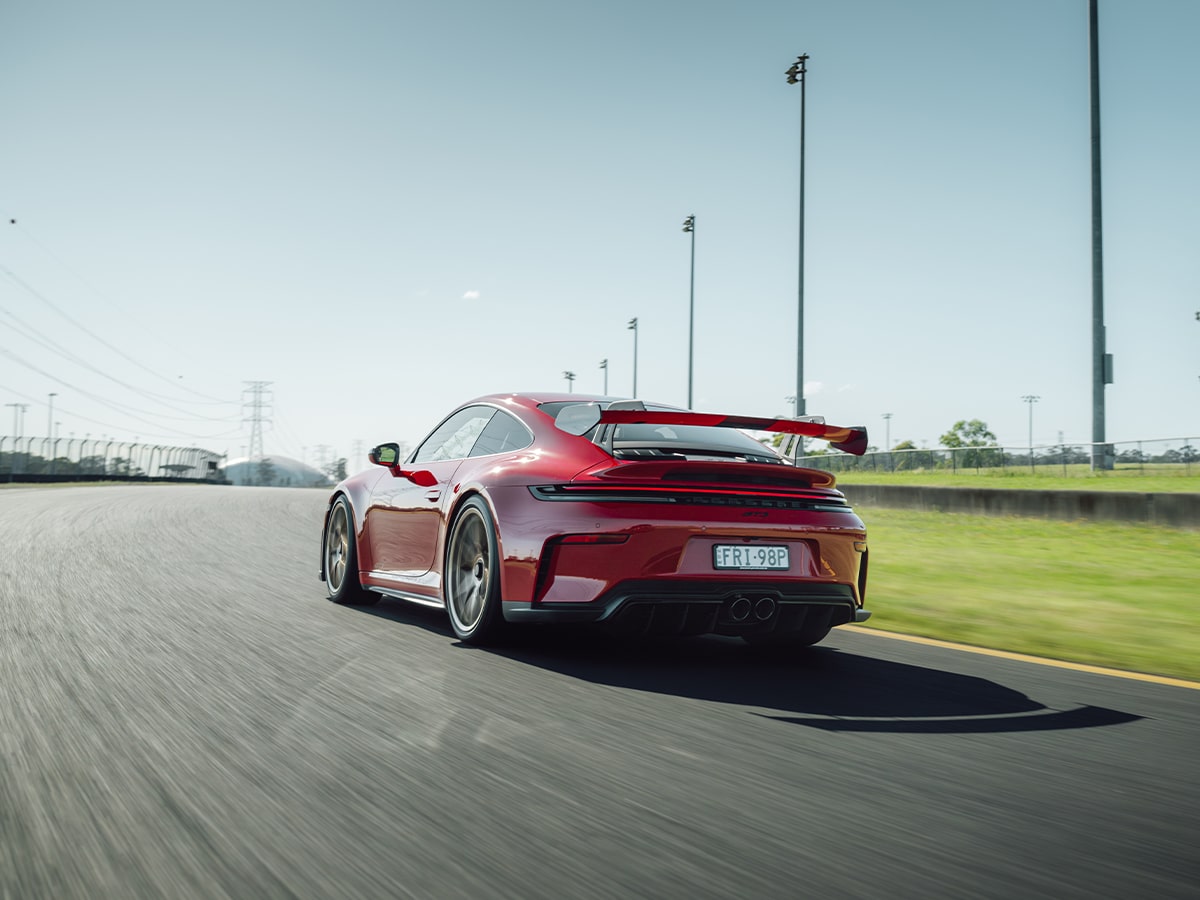
Verdict
The motoring journalist in me wants to find a negative thing to say about the Porsche, but every car lover on earth should be happy this car still exists, so I won’t try too hard to find one. I was prepared to wax lyrical about the absence of the rotary ignition switch, but they’ve even added that back in.
Despite the emissions regulations, which threatened to derail the perfect sports cars formula, Porsche has delivered an all-around better product than before, and it’s just as desirable as ever.


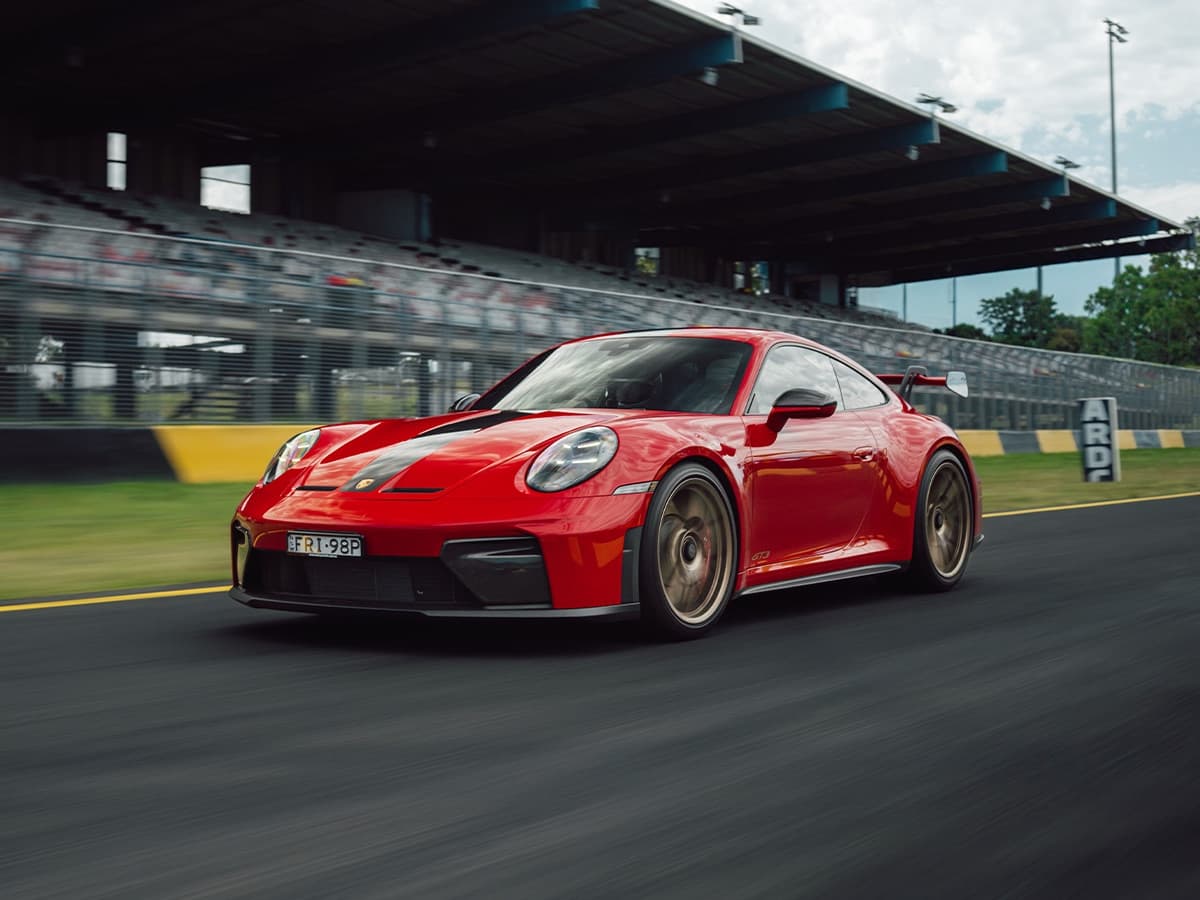
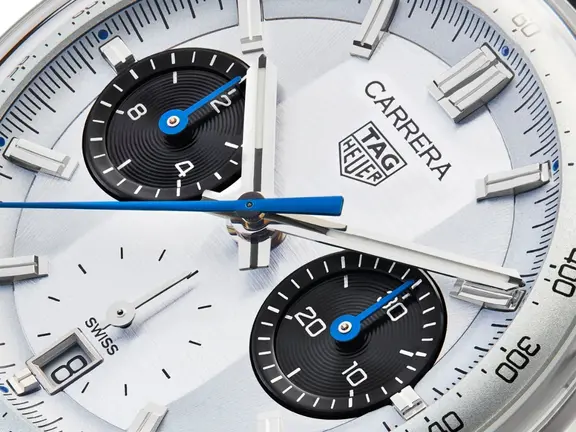


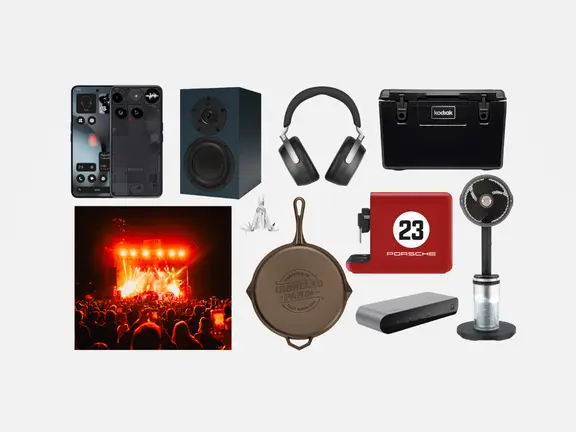
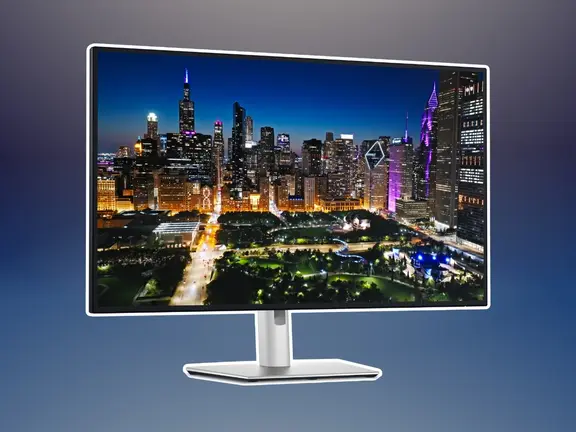











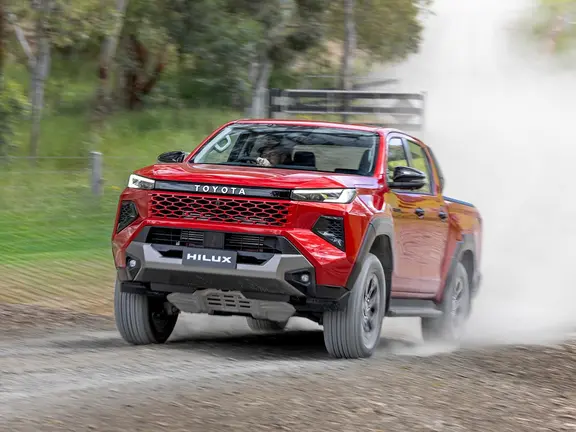
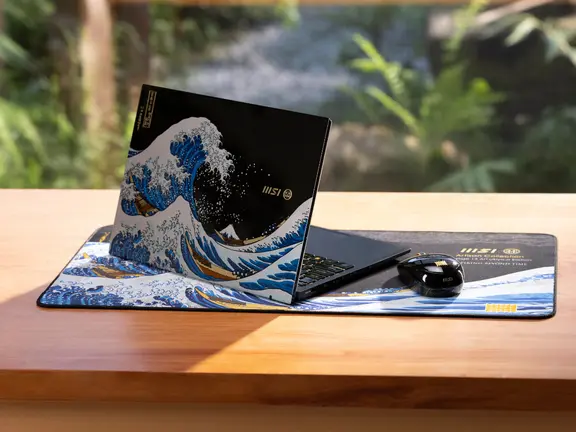

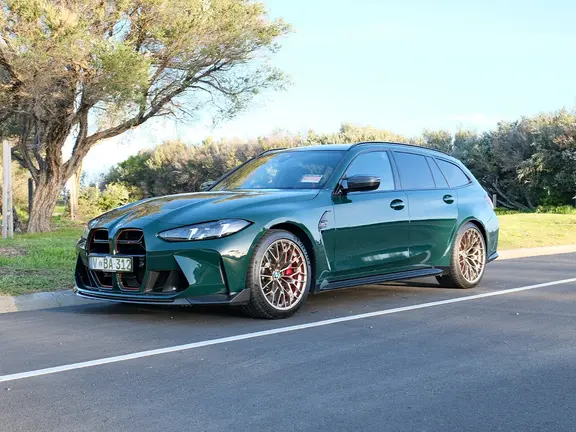







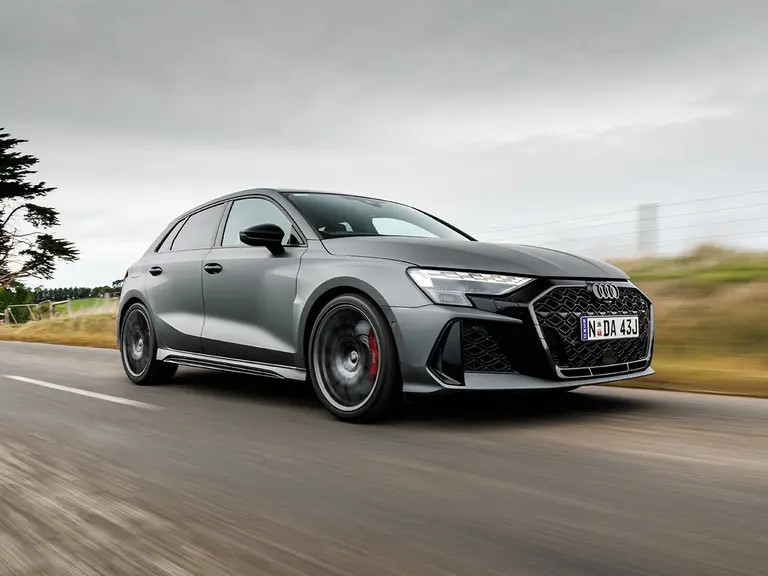
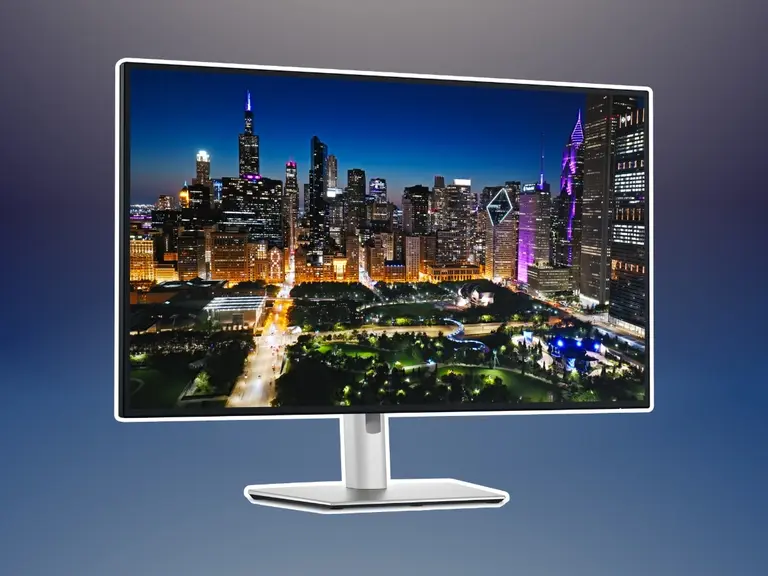
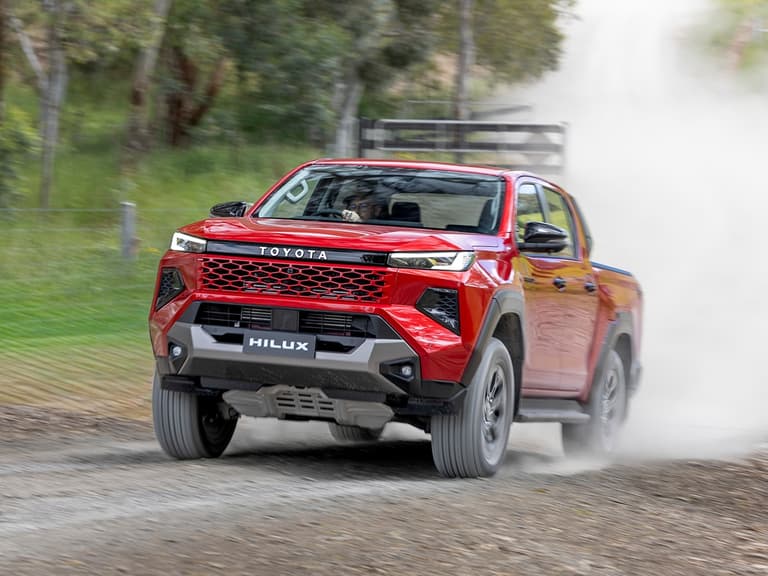
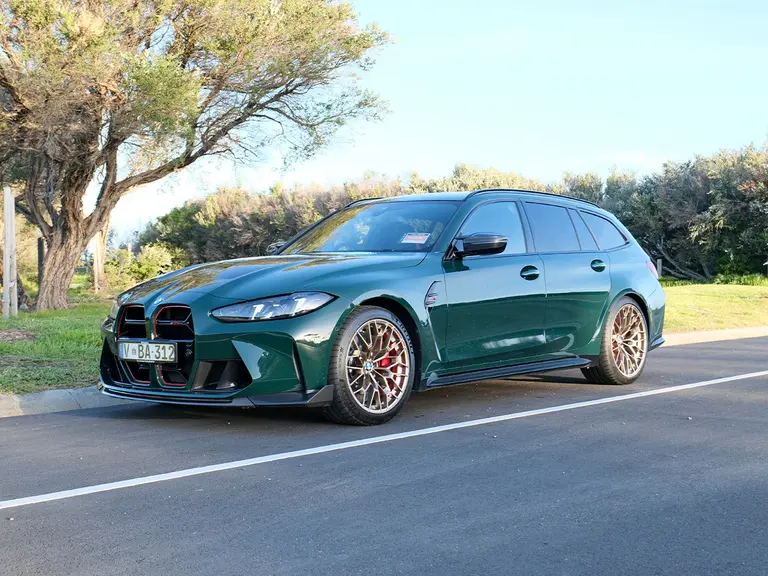
Comments
We love hearing from you. or to leave a comment.